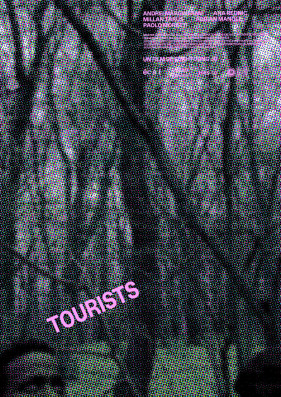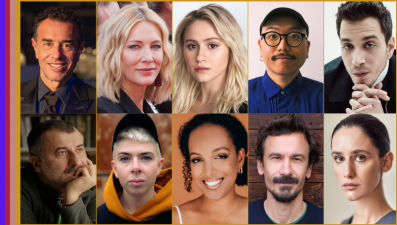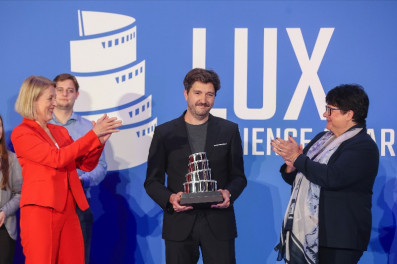
Plant (879 pages, 33 days)- PLJ critics workshop review: Interpretation and playing with narrative, form and aesthetics
Short films, short reviews by Pravo Ljudski Film Festival "How to Think Film" young critics
The short documentary “Plant (879 pages, 33 days)” directed by German director Ruth Hofflich was a part of this year’s Pravo Ljudski Film Festival program named Feminist Acts of Play and Imagination.
The narrative of the film is concentrated on a story that is part of the folklore of southwestern Germany. The story is about a woman, Anna Maria Wagemman, who is found guilty of witchcraft by her family and the environment in which she lived, after finding a lizard's head and objects associated with the cult of demons in her garden. Details of Anna Maria Wagemman slowly unravel as we follow the story of two narrators, a mother and daughter, who discover how they found the witch trial writings buried in their garden. The narrative builds a link between the two stories in different time frames. A mother and daughter who find writings about the witch trial in 2020 and who are increasingly connected to her fate, and a woman who was convicted of witchcraft in 1980.
Due to the shooting angles changing in a few seconds, which are set clumsily in most scenes, it is easy to conclude that an amateur lens was used for the shooting or that the shooting itself was done in an amateur way. However, with her fast-paced shooting angles, fluid shots and seemingly amateurish moves, the director leaves us no room to experience the film as monotonous or to turn our attention to anything other than what we have in front of us on screen. Because of its fluidity and dynamism, the film in each scene brings a sense of anticipation and excitement about what might happen next. By the end of the film, we wonder how the trial of Anna Maria Wagemman ended and whether the narrators found any more evidence that the witch once lived on their property and was not just part of German folklore.
The atmosphere of the film is also fluid, because, in the scenes where we watch the dialogue of mother and daughter in the same room, we feel safe, while in the scenes shot at night in their garden we feel insecure because we expect to see another moment. proof that the witch existed. When it comes to aesthetics, the film relies on details that in many shots represent hidden symbols of witchcraft and the occult. One of the shots that are repetitive in the film is the shot of a lizard lying on a rock. These shots have a special symbolic meaning in the film, as the lizard head found in Anna Marie Wagemman’s garden served as one of the proofs of her witchcraft.
Some of the repetitive shots are shots of an eggshell cracking or a leaf of a plant moving in the wind. An interesting directorial solution is that the director relies more on the potential of the sounds in the environment in which they are located than on the effects or music. The sound that is repeated in many scenes showing details of plants in the garden, the land where writings, lizards or eggshells were found is the sound of opening and closing wooden doors that acts like a witch's laughter and causes feelings of discomfort and smouldering fear. When we hear that sound, we get the feeling that a witch will appear at any moment. The symbolic dimension of the film, as well as the experience of the transition from 2020 to 1980, rely in particular on photographs, analogue and digital, which appear in individual shots.
Ruth Hofflich creates a documentary in which not only different film narratives are intertwined, but different periods and symbols that help us experience the atmosphere and character of both periods. Hofflich uses fluid shots and builds his aesthetics mostly by showing details that have a special symbolic value. Interestingly, we do not feel the lack of the main character, ie Anna Marie Wagemann, who is constantly mentioned as the protagonist, but her character replaces the connection that the two narrators feel more and more with her and her destiny. The film also feels the author's aspiration to portray a woman who exists in the folklore of many cultures and peoples and who is always easily condemned for sins such as witchcraft, even based on evidence that very rarely suggests it. As much as the film carries an atmosphere of fear, discomfort or anticipation, Ruth Hofflich plays with form, narrative and aesthetics, creating a film achievement unique to watching and analyzing.
Written by: Mirela Salihović















